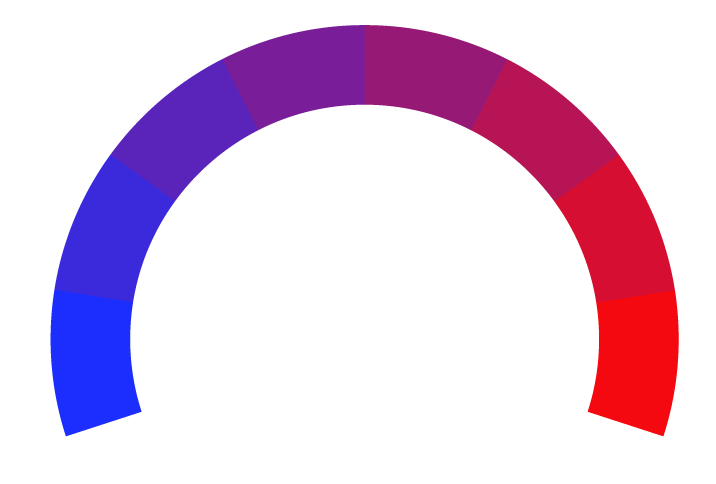 Business Insider Article Rating
Business Insider Article RatingAn expired remnant of the Iran nuclear deal may help Russia rearm for another winter of missile attacks on Ukraine
- Bias Rating
- Reliability
90% ReliableExcellent
- Policy Leaning
92% Very Right
- Politician Portrayal
N/A
Continue For Free
Create your free account to see the in-depth bias analytics and more.
By creating an account, you agree to our Terms and Privacy Policy, and subscribe to email updates.
Bias Score Analysis
The A.I. bias rating includes policy and politician portrayal leanings based on the author’s tone found in the article using machine learning. Bias scores are on a scale of -100% to 100% with higher negative scores being more liberal and higher positive scores being more conservative, and 0% being neutral.
Sentiments
N/A
- Liberal
- Conservative
| Sentence | Sentiment | Bias |
|---|---|---|
Unlock this feature by upgrading to the Pro plan. | ||
Reliability Score Analysis
Policy Leaning Analysis
Politician Portrayal Analysis
Bias Meter
Extremely
Liberal
Very
Liberal
Moderately
Liberal
Somewhat Liberal
Center
Somewhat Conservative
Moderately
Conservative
Very
Conservative
Extremely
Conservative
-100%
Liberal
100%
Conservative

Contributing sentiments towards policy:
59% : Iran may also hope that in return for exporting drones to Russia and helping build them there, Moscow will license the production of other Russian military hardware in Iran.56% : Tehran may also want to build later-model T-72 and T-90 tanks under license.
51% : "Iran has long dreamt of its own fighter jet and main battle tank production lines, but whether such a perceived cooperation will extend to missile/rocket technology, we will have to wait and see," Nadimi told Insider.
50% : Since then, especially after the war in Ukraine began in February 2022, there have been indications that Iran expected to receive two dozen Su-35 fighter jets from Russia.
50% : Despite "political games" involved in the Su-35 contract, Mardasov expected it to be implemented "in the medium- or even long-term" but said Moscow was less likely to export armored vehicles or helicopters to Iran due to demand on its defense industry to replenish Russian military stocks.
48% : The resolution prohibited Tehran from exporting and importing missiles and drones with ranges exceeding 186 miles and payloads over 1,100 pounds -- limits suggested by the Missile Technology Control Regime -- until October 2023.
47% : UN Security Council Resolution 2231 was passed in July 2015, days after the US and Iran agreed on the Iran nuclear deal.
47% : "Unexpected decisions are possible, but for now, I am skeptical about the possibility of Iran supplying the Zolfaghar SRBM and other missiles to Russia," Mardasov said, naming an Iranian missile with a range of just over 400 miles.
46% : (The EU, the UK, France, Germany, Russia, and China also signed the deal.)
45% : If Moscow gets Iranian SRBMs now, Ukraine could face unprecedented pressure, but there are still doubts those missiles will end up in Russian hands.
44% : While Moscow requires "as many high-precision weapons" as possible, it also "doesn't want to become completely dependent" on Tehran, Mardasov told Business Insider.
43% : "Supplies to and from Iran of products falling under the Missile Technology Control Regime no longer require prior approval by the UN Security Council," the statement said.
40% : The day before UN restrictions on Iran's import and export of ballistic missiles and armed drones expired on October 18, Russia declared it was no longer legally obligated to adhere to such restrictions.
39% : Resolution 2231's ban on Iran importing or exporting arms expired in October 2020.
35% : The US and the European signatories of the nuclear deal have decided to uphold sanctions against Iran's missile program, primarily because Tehran violated some terms of the agreement after Washington withdrew in 2018.
22% : There has been persistent speculation about Iran supplying Russia with short-range ballistic missiles, or SRBMs, but that would almost certainly draw snapback sanctions under the resolution and Tehran has not yet done so.
*Our bias meter rating uses data science including sentiment analysis, machine learning and our proprietary algorithm for determining biases in news articles. Bias scores are on a scale of -100% to 100% with higher negative scores being more liberal and higher positive scores being more conservative, and 0% being neutral. The rating is an independent analysis and is not affiliated nor sponsored by the news source or any other organization.






















